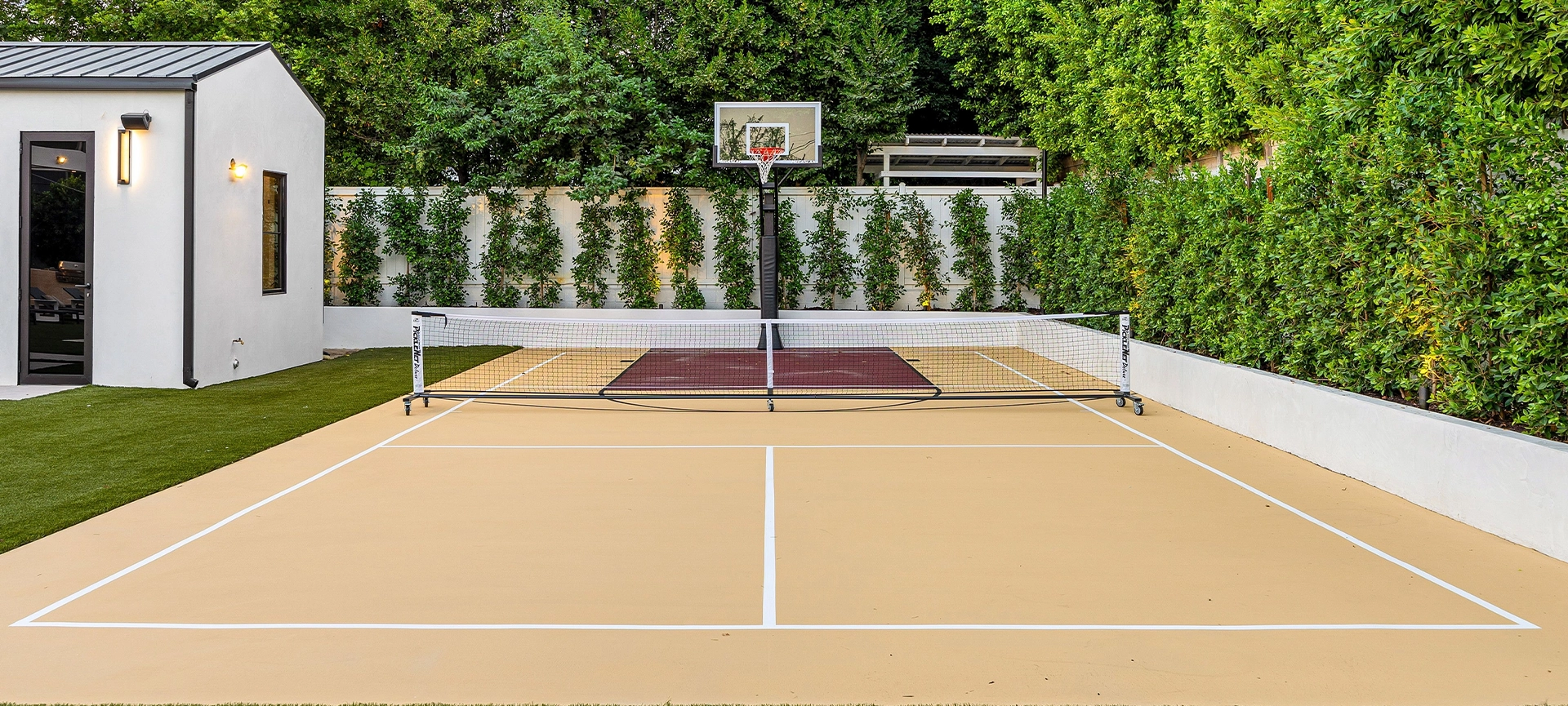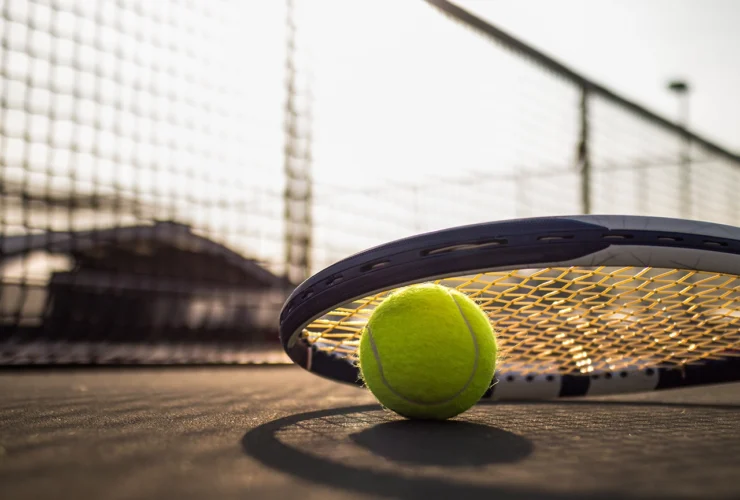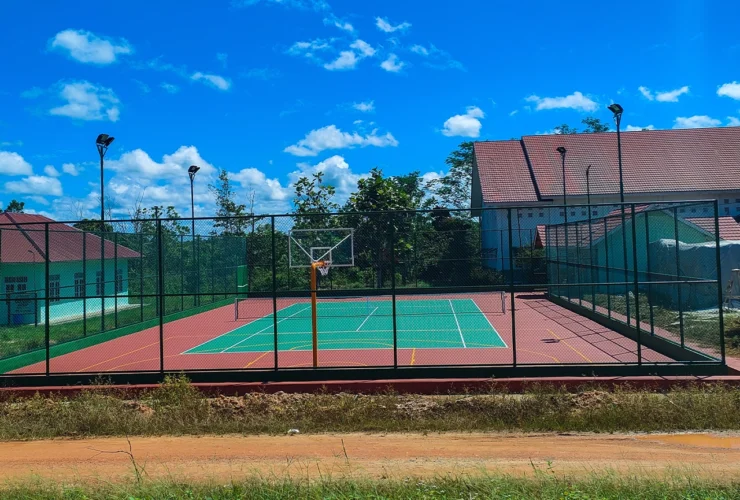Understanding the Construction Process for Backyard Sports Court
Building a backyard sports court—whether tennis, basketball, or pickleball court—involves several precise steps that ensure the finished surface is sturdy, functional, and visually appealing. Each phase, from the initial consultation to the final lines painted on the court, plays a distinct role in shaping how well the court holds up over time.
This guide breaks down the major steps in the construction process so you can see what it takes to create (or resurface) a court that stands up to regular use and challenging weather conditions.
Related Article: Types of Materials Used in Sports Court Construction
Initial Consultation and Planning
Before breaking ground, there’s a vital stage of discussion and design:
- Project Goals
- Decide which sports you’d like to accommodate (tennis, basketball, pickleball, or a combination).
- Determine the court dimensions and any special requirements (like additional lines or court markings).
- Budget Considerations
- Talk about your ideal budget for the project, factoring in everything from materials to labour.
- Ask about ongoing costs, such as future resurfacing or added features.
- Site Selection
- Identify a location with enough space, proper access, and a level grade.
- Check for obstacles like large trees or uneven ground that could complicate construction.
During this phase, you’ll also get an overview of the timeline. Weather, availability of materials, and site conditions all influence how long each part of the process might take. By hashing out these details early, both you and the contractor can set realistic goals for when the court will be ready for use.
Related Article: How Long Does the Construction of a Sports Court Take?
Site Assessment and Preparation
Once you’ve clarified your vision, the contractor evaluates the property in greater detail:
- Soil Analysis
- Assess whether the existing soil can support the court without shifting.
- If the soil is too soft or retains water easily, it may need reinforcement or improved drainage.
- Drainage Planning
- Map out how water will exit the court.
- Slopes of 1% or less are typical in many builds, preventing water from pooling and damaging the surface.
- Clearing and Leveling
- Remove debris, vegetation, and topsoil to expose a stable subgrade.
- Use specialized equipment or hand tools to ensure the surface is free of large rocks and roots.
Laser-guided grading is a big advantage at this step. It helps achieve the exact slope required for effective drainage. A well-prepared base sets the stage for a smooth final surface, minimizing the risk of cracks or uneven spots.
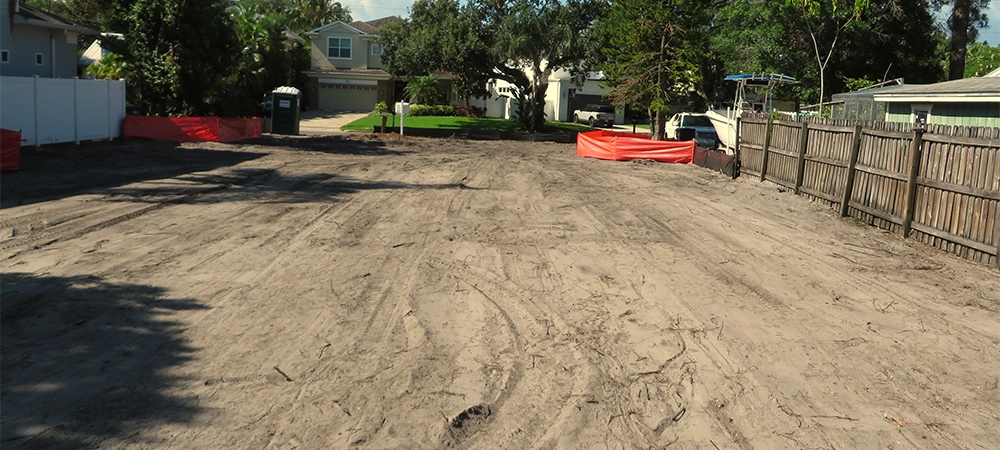
Building the Base Layer
A reliable base is the backbone of any sports court. It typically includes:
- Crushed Stone or Gravel Layer
- Provides a stable foundation that supports the surface material.
- Compacts well and adapts to any slight irregularities in the soil.
- Asphalt Sub-Base (Optional)
- Commonly used for tennis courts and some basketball courts.
- Offers a uniform platform onto which layers of surfacing material are applied.
- Compaction
- Ensures each layer is level and dense, preventing future shifting.
- Crowall’s use of laser-guided technology guarantees consistent grading, which is crucial for long-term performance.
Depending on your design and how the court will be used, you might opt for multiple layers or thicker sections in high-traffic areas. The main goal is to create a stable, even surface so your final court can withstand regular play, unpredictable weather, and normal wear and tear.
Related Article: The Process of Laser-Guided Grading: What to Expect and How It Benefits Your Sports Court
Choosing and Applying the Surface
Your final surface choice affects everything from ball bounce to traction:
- Acrylic Coatings
- Popular for tennis and multi-sport courts due to consistent bounce and vibrant colour.
- Different coating thicknesses can alter the speed of play.
- Cushioned versions reduce player fatigue by absorbing more impact.
- Specialized Coatings for Basketball
- Formulated for better traction and abrasion resistance.
- Resistant to marking or scuffing from shoes and balls.
- Pickleball Surfaces
- Often similar to tennis coatings but sized for a smaller court.
- Can include lines for dual use if you’d like a combined pickleball and tennis facility.
When applying these surfaces, the contractor typically layers coatings in multiple passes, allowing each application to dry thoroughly. Weather conditions matter as extreme heat, cold, or humidity can affect curing times and how well the material bonds.
Additional Features and Customization
A quality sports court isn’t limited to the surface alone. You might choose to enhance the space with:
- Fencing
- Keeps balls in play and marks boundaries.
- Metal or chain-link fences are common, with various heights and gate options.
- Lighting
- Extends playable hours into evenings or overcast days.
- Energy-efficient LED systems are widely available, reducing long-term costs.
- Custom Painting or Logos
- Adds a personal touch for schools, clubs, or private residences.
- Allows you to showcase team colours, mascots, or monograms.
- Seating and Landscaping
- Benches or small bleachers create a comfortable viewing area.
- Thoughtful landscaping improves aesthetics and can enhance drainage if designed properly.
Importance of Accurate Line Markings
Line markings define the functional identity of the court—one set of lines for tennis, another for basketball, and so on. A few key points about this phase:
- Precision is Key
- Official tennis courts measure 78 feet in length, but lines vary for singles vs. doubles.
- Basketball sports courts need distinct free-throw lanes, three-point arcs, and boundary lines.
- Accurate measuring ensures fair play and consistent athlete performance.
- Types of Marking Materials
- Specialized paint that adheres to acrylic surfaces.
- Tape is used on some multipurpose sports courts, especially if lines need updating often.
- Longevity
- High-quality markings shouldn’t peel or fade quickly.
- Proper application and surface preparation help keep them sharp and visible.
If you have a multi-purpose court, consider multiple sets of lines in different colours to simplify play for various sports. The contractor will confirm the layout with you in advance to ensure all markings meet your exact requirements.
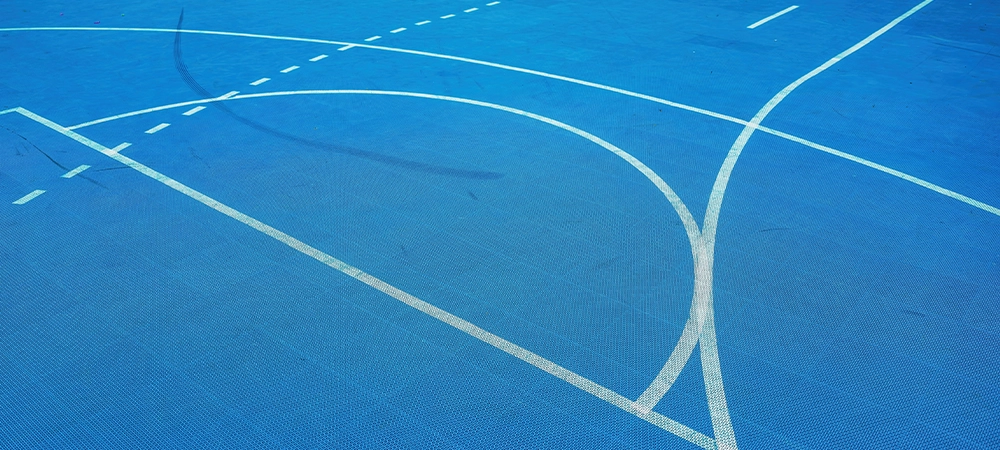
Weather Considerations and Scheduling
Ontario’s changing seasons have a direct impact on sports court construction. Keep these aspects in mind:
- Temperature Constraints
- Extreme cold can freeze materials, preventing proper curing.
- Excessive heat can make coatings dry unevenly.
- Rain and Moisture
- Rain delays can halt work, especially during critical stages like a surface coating.
- Proper drainage planning helps reduce downtime once the court is finished.
- Ideal Construction Windows
- Spring through early fall is typically best for building or resurfacing.
- Contractors might still work in other seasons, but weather risks increase timelines or costs.
Regular Maintenance for Longevity
A new sports court can serve you well for years if you keep up with maintenance. Some essential steps include:
- Surface Cleaning
- Sweep or blow off leaves, dirt, and debris to avoid staining or slippery spots.
- Gentle washing with water and mild detergent can help remove tough grime.
- Inspecting for Cracks
- Small cracks are easier and cheaper to fix early.
- Seasonal freeze-thaw cycles can stress the court surface, so check regularly.
- Re-Coating and Resurfacing
- Most acrylic tennis courts need resurfacing every 5–7 years, depending on usage.
- Basketball courts often see heavier foot traffic, so track wear levels closely.
- Equipment Checks
- Inspect nets, rims, and fencing for damage or rust.
- Replace or repair items that show significant wear to maintain a professional feel.
Final Rally: Your Sports Court Journey
Constructing a sports court is an exciting endeavour that can transform underused outdoor space into a hub for friendly matches, serious practice, or family fun. Each phase lays the groundwork for a surface that meets professional standards while staying in great shape over time.
Whether you’re setting up a private tennis court in your backyard or upgrading a public sports facility, remember to factor in maintenance and future needs. A well-built court, coupled with regular upkeep, will let you enjoy safe, reliable play for a long time to come.
If you’re in Ontario and ready to get started, Crowall offers consultation, construction, and resurfacing expertise that aligns perfectly with your project goals. Call us today for a free consultation.

